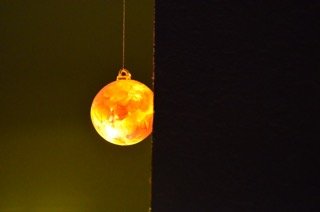Ghosting
Last week a student asked me, “Miss Amy, what are you going to be for Halloween?”
“A piano teacher,” I answered.
“Scary,” he said. The kid is not without a sense of humor. “What does that costume look like?”
I ask myself that every single day.
With the fall studio recital just weeks away, we are talking a lot about ghosting in our practicing, although not of the Halloween costume kind of ghosts. One of the many challenges to recital preparation is the memory work. Thanks to the precedent set by our over-achieving piano forefathers (and mothers like Clara Schumann!), pianists are routinely expected to memorize for performances.
My studio is no exception.
While there are many compelling arguments on both sides of the issue of memorization, the fact remains: memorizing music demands us to learn more thoroughly. We are forced to reconcile the discrepancies in what we may or may not really know. We have to understand patterns in the music on a deeper level, which makes for a richer encoding process within the brain. Cognitively speaking, these are good things.
But memorizing requires us to practice differently than merely rehearsing the notes and rhythms on the page in front of us. And it is to that subject that we turn.
There are a million strategies for memorizing, and many pedagogues have written extensively on the subject. But there has not been enough discussion, in my opinion, about how to test one’s memory work, aside from merely playing through the piece in question. This often is not the most definitive test of memorization, for as cognitive theorists will tell you, “state dependent learning” (hooking our memory to a specific place, situation, emotion, even a particular scent) is a powerful thing. We often can play our music just fine on our own pianos, in our own houses, during our regular practice hour. The question is whether we can do it anywhere else, at any other time. And that’s where good assessment of our memory work is crucial.
Today we are going to look at one test for memory, which provides us with yet another practice strategy for that growing list: ghosting. When my kids are not answering every question I ask with “rhythms,” they respond to my question: “how should you practice this?” with “ghosting.” This proves only to be helpful about as often as the rhythm answer is. Clearly, I still have work to do in teaching students to determine more accurately the best practice strategy needed in any particular case. At least, however, they know two methods of practicing. I must at least be doing some things right.
But back to ghosting.
Ghosting is first introduced in piano lessons when teaching the skill of balance—learning to play one hand louder than the other (which, admittedly is not “balance” at all, as my students like to point out). Ghosting means playing silently on the surface of the keys—“ghosting” the physical gestures but not making a sound. It is great for teaching balance, (or “imbalance” as it should more rightly be called) because it demonstrates very quickly the difference in weight needed to produce two contrasting sounds: One hand is an elephant; the other is a feather.
But ghosting is also a brilliant device for checking memory. Ghosting subtracts the aural component of the music, but keeps the physical gesture, which messes with our brain. By divorcing the habitual muscle memory from the sound, we circumvent the automatic process, which is good for making us think more concretely about what we are doing. We have to use more conscious cognitive thinking instead of relying on automatized physical gestures. We are forced to internally “hear” what we are ghosting, which also tests our memory. Ghosting can be painfully humbling.
There are three ways to ghost: Both hands can ghost at the same time, or one hand or another can ghost while the other plays normally. The kids will tell you that the one they want to avoid is the RH ghost/LH play version. Because we often are accustomed to listening more closely to the melody, which is most often in the RH or top voice, it is disconcerting to suddenly have that half of the equation gone. Just because that’s how I roll, I can tell you that RH ghost/LH play is the one I most often “test” in lessons, much to the students’ chagrin.
Really, who needs a costume? Piano teachers are scary enough.
